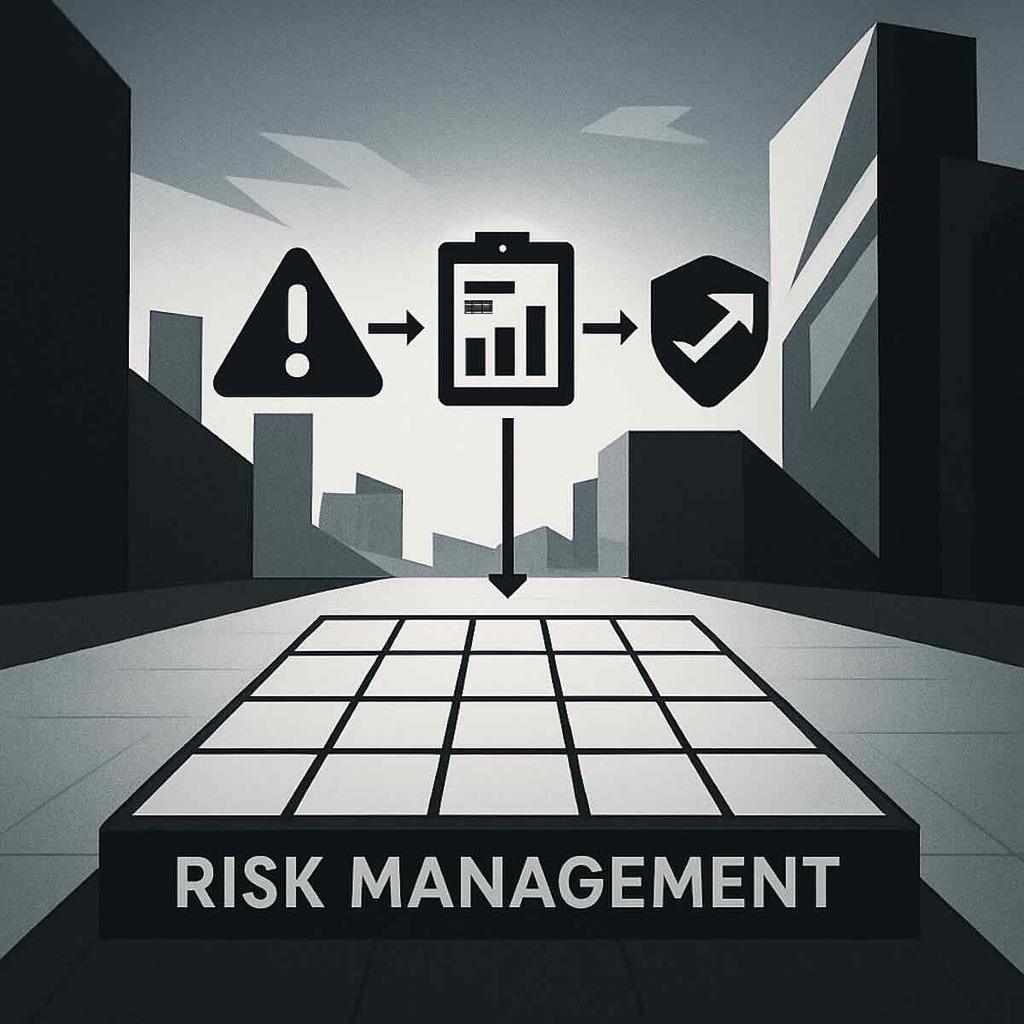Imagine if you could reduce your losses while also gaining big wins. The barbell strategy mental model is a bold way to handle risk. It was created by Nassim Nicholas Taleb in Antifragile. This method suggests dividing your resources into ultra-safe areas and high-risk, high-reward spots.
This strategy comes from portfolio theory but challenges the usual balanced approach. It focuses on asymmetric risk, where you lose a little but can win a lot. For instance, you might put 90% of your money in safe places like cash or bonds. Then, use the remaining 10% for riskier bets, like investing in startups or cryptocurrencies.
This idea isn’t just for investors. It’s also great for making career decisions, business strategy, and time management. The main idea is to protect your base, then take big risks with what you can afford to lose. This article will show you how to use the barbell strategy in life’s big choices. And why staying in the middle might be the riskiest move.
Key Takeaways
- Combines safety and high-reward actions to avoid middle-ground risks
- Barbell strategy mental model: Originated in finance but applies to careers, relationships, and daily choices
- Protects against major losses while enabling big wins
- Works better than traditional “balanced” approaches
- Helps allocate time and resources more effectively
The barbell strategy mental model isn’t about playing it safe—it’s about playing smart. Let’s explore how this mindset helps you thrive in unpredictable situations.
Understanding the Barbell Strategy Mental Model

Picture walking a tightrope with safety nets below and wings on your back. This dual mindset defines the approach: secure most resources while chasing rare breakthroughs. It’s not about balance, it’s about radical separation between protection and possibility.
To effectively use barbell strategy, a person must embrace these principles and recognize the things that separate traditional methods from innovative approaches.
The Dual Logic: Safety Nets and Lottery Tickets
The method splits decisions into two extremes. One side focuses on absolute protection—like keeping savings in stable assets. The other embraces high-stakes experiments, such as learning cutting-edge skills. This split avoids the trap of “reasonable risks” that often hide unpredictable dangers.
| Factor | Dual Approach | Middle Ground |
|---|---|---|
| Risk Exposure | Clear boundaries | Unmeasured hazards |
| Potential Losses | Capped at 10-20% | Unlimited downside |
| Growth Opportunities | Targeted bets | Diffused efforts |
| Predictability | Controlled variables | Hidden blind spots |
Barbell Strategy Mental Model: Why the Center Collapses
Moderate risks feel comfortable but carry invisible threats. Imagine driving 35 mph in a 30 mph zone—too fast for safety, too slow for thrills. This middle way often leads to stagnation or surprise failures.
By contrast, separating safety from ambition lets you weather storms and catch rising tides. You keep 80-90% of resources untouchable while letting the remainder chase exponential returns.
This creates what researchers call “positive asymmetry”—where losses stay small, but wins can change everything.
Origins and Core Principles

How do breakthroughs happen? Nassim Taleb noticed patterns others missed. His work revealed that big wins rarely come from gradual progress. They emerge suddenly, like lightning strikes in the market.
This observation shaped his approach to handling uncertainty and encouraged investors to use the barbell strategy to position themselves against black swans.
Nassim Taleb’s Foundational Concepts
Taleb saw traditional investments as flawed. Most portfolios mix medium-risk choices, creating hidden dangers. His solution? Radical separation. Put 90% of funds in ultra-safe options like cash, then gamble 10% on wild opportunities.
This split acknowledges reality. Life-changing gains come from rare events—not steady climbs. By sheltering most resources, you survive downturns. Your smaller, riskier bets become tickets to exponential growth.
Black Swan Events and the Psychology of Rare Payoffs
Barbell thinking is about spotting rare, big events, known as Black Swans. These events, like the 2008 financial crisis, have a huge impact. They are not expected by traditional plans that rely on past trends.
This strategy is effective because it prepares for big changes. It also keeps options open. Our brains often miss the big impact of rare events, as psychology shows.
By planning for the unexpected, you can avoid surprises. You might even gain from them. It’s a smart way to handle the unpredictable.
The 80/90% Low-Risk, 10/20% High-Risk Allocation
Imagine building a fortress with a launchpad. The bulk of your portfolio stays protected in stable investments. Think treasury bonds or savings accounts. Meanwhile, the remaining slice chases moonshots—emerging markets, innovative stock picks, or bold career moves.
This math-driven method limits losses to 10-20% max. Yet it leaves room for unlimited upside. Unlike “balanced” approaches, you avoid middle-ground traps where risks outweigh rewards. Your safety net stays intact while your ambitions take flight.
Financial Applications of the Barbell Strategy
Where do market storms become opportunities? Modern finance reveals a counterintuitive truth: true safety comes from embracing extremes. Research shows combining ironclad security with bold bets outperforms conventional methods when markets swing wildly.
Investment Allocation Techniques
A 2021 Journal of Portfolio Management study found portfolios splitting money between ultra-safe assets and high-growth options gained 14% during downturns versus 6% for traditional mixes. The secret? Allocate 85-90% to treasury bonds or cash equivalents. Use the remainder for ventures like emerging markets or disruptive tech stocks.
This split creates two shields. Protected funds ensure survival during crashes. Riskier allocations capture explosive returns when markets rebound. Unlike balanced investment plans, you avoid assets that collapse when correlations break—like “safe” corporate bonds during 2008’s crisis.
Performance During Market Downturns
Chaos rewards those prepared for extremes. Traditional portfolios assume historical patterns repeat—a dangerous myth. When the 2020 crash hit, barbell-style investors held 90% in cash while others watched “stable” assets plummet.
Volatility becomes profitable when you structure for surprise. Protected capital lets you buy undervalued assets during panic. Meanwhile, your high-risk slice thrives on market rebounds. This dual approach turns uncertainty into returns while keeping money safe from unseen threats.
Barbell Strategy in Business and Product Strategy

How do industry leaders stay ahead while avoiding collapse in a market filled with negative black swans? The answer lies in splitting resources between rock-solid foundations and daring leaps forward.
This dual focus lets companies thrive through economic storms and technological shifts, ensuring a steady income stream while preparing for the next game-changing opportunity.
Real-World Examples from Leading Companies
Google’s approach demonstrates this principle in action. Over 80% of its revenue comes from search and ads—reliable cash cows. Meanwhile, 20% of resources fund ventures like self-driving cars and quantum computing. These bets might fail, but one success could redefine entire industries.
John Doerr’s product framework mirrors this split. He advocates “roofshots”—improvements to existing products—alongside rare “moonshots.” Roofshots deliver steady gains. Moonshots aim for 10x breakthroughs. This mix keeps teams grounded yet ready for explosive growth.
Innovative and Conservative Balancing in Corporate Models
Companies that stick to medium-risk efforts often struggle. Blockbuster focused on maintaining stores instead of streaming. Kodak hesitated with digital cameras. Both collapsed when markets shifted.
| Conservative Core | Experimental Ventures | Failed Middle |
|---|---|---|
| Stable revenue streams | Industry-disrupting ideas | Gradual upgrades |
| 85-90% resources | 10-15% resources | 100% resources |
| Predictable growth | Unlimited upside | Stagnant returns |
Smart business leaders protect their core work while testing bold ideas. Amazon keeps retail operations steady while funding space exploration. This creates safety nets and springboards in one company structure. The key? Never let “good enough” become the enemy of revolutionary change.
Practical Uses in Daily Life
Ever feel stuck between playing it safe and chasing dreams? This approach reshapes ordinary decisions into springboards for growth. By splitting energy between security and exploration, you create safety nets and launchpads in your career, finances, and relationships.
Career Crossroads Made Clear
Most people waste years in jobs that offer neither stability nor growth. Here’s a better way: keep 80% of your effort in reliable work that pays bills. Use the remaining 20% to test new skills or side projects. A marketing manager might learn AI tools evenings and weekends. A teacher could start tutoring online.
This split prevents burnout while creating exit ramps from dead-end roles. You gain clarity—either dive deeper into your current path or build bridges to new opportunities.
Barbell Strategy Mental Model and Money Moves That Multiply
Smart money management isn’t about average returns. Protect 90% in emergency funds and index funds. Let 10% chase wilder possibilities—peer-to-peer lending, skill-building courses, or niche investments. One couple used their “risk slice” to buy a vacation rental. It now covers their mortgage.
This method turns financial decisions into calculated experiments. Losses stay contained, while wins can upgrade your life.
In relationships? Invest deeply in connections that fuel your growth. Limit time with those stuck in complacency. Your life becomes a mix of rock-solid foundations and thrilling possibilities—no more middle-ground mediocrity.
Risk Management and Avoiding the Middle

Life’s biggest failures often come from unseen traps in “safe” choices. True security emerges when you build guardrails against disaster while keeping windows open for breakthroughs. This approach transforms uncertainty into a ladder rather than a pit.
Minimizing Downside Risk
Effective protection starts with capping potential losses. Imagine investing only what you can afford to lose completely. A 2023 Stanford study showed people who limit financial exposure to 15% of their net worth recover 3x faster from setbacks.
This isn’t about avoiding risk—it’s about designing failure points. Set clear thresholds: “If this project loses $5k, I’ll pivot.” Like airbags in cars, these limits let you crash without catastrophe.
| Middle Ground | Extreme Positions | |
|---|---|---|
| Risk Exposure | Hidden dangers | Clear boundaries |
| Downside Impact | Unlimited loss | 20% max |
| Upside Potential | Linear growth | Exponential gains |
| Flexibility | Locked-in path | Multiple options |
Preserving Optionality for Upside Gains
Great opportunities often arrive disguised as dead ends. By keeping 10% of resources uncommitted, you maintain capacity to act when others can’t. A baker might reserve funds for pop-up events—ready when food trends shift.
This optionality creates favorable asymmetry. Most efforts fail modestly, but occasional wins change everything. Like planting diverse seeds: most sprout, few become oaks. The key? Never bet so much that failure closes future doors.
Ask yourself: “What can I lose without regret?” Then chase gains knowing your foundation stays intact. This balance turns life’s volatility into fuel rather than fear.
This principle is closely tied to the optionality mental model. It’s about keeping options open in uncertain times. The barbell strategy provides a solid foundation, but optionality lets you seize opportunities when they arise.
Balancing Immediate and Long-Term Decisions
Time shapes our lives, but how we allocate attention determines success in the game of life. Most people get stuck in the anxious gap between now and later, especially when considering the barbell strategy for risk management.
The solution? Treat your hours like fertile soil. Plant seeds for today’s harvest while nurturing saplings for future forests, preparing for unexpected black swans.
Optimizing Timeframes in Personal Strategies
Research reveals a sweet spot: spend 40% of your time fully engaged in today’s work. Another 40% connects to 5-10 years goals. Leave just 20% for weekly plans. This split creates flow states while building lasting value.
| Timeframe | Focus Area | Emotional Impact | Outcome |
|---|---|---|---|
| Today | Deep work sessions | Flow and satisfaction | Daily progress |
| Weeks/Months | Progress checks | Anxiety spikes | Distracted efforts |
| 5+ Years | Vision development | Calm perspective | Compound growth |
Mitigating Short and Mid-Term Anxiety
The danger zone lies between tomorrow and next quarter. Checking metrics too often breeds impatience. One entrepreneur tracked monthly revenue—until she noticed her creativity plummeted. Shifting to daily tasks and 10-year goals restored her momentum.
This approach helps you spot when middle-term worries creep in. Did last month’s setback derail your focus? Return to today’s checklist and your decade vision. Progress becomes visible again.
By anchoring in the present and future, you sidestep the restless middle. Your work gains meaning, while anxiety loses its grip.
Lessons from Zen Buddhism and Antifragility

What do ancient wisdom and modern resilience have in common? Both teach us to embrace extremes while staying grounded. Zen masters understood the power of presence—fully engaging with now while remaining open to life’s unpredictable turns. This mirrors the dual focus of protecting core stability while pursuing rare breakthroughs.
The Power of Complete Commitment
A tea ceremony master shows us the way. Every movement is precise, yet the outcome remains fluid. Apply this to your life: give 100% focus to current tasks while keeping space for unexpected opportunities. A chef perfects basic knife skills daily but experiments with bold flavors weekly. This rhythm builds mastery and discovery in equal measure.
Mindful Decision Making in High-Stakes Environments
High-pressure moments demand clarity, not panic. Imagine a firefighter assessing risks while acting decisively. This balance comes from training—both in safety protocols and adaptive thinking. In your world, create pauses before big choices. Ask: “Does this protect my foundation or expand possibilities?”
The barbell strategy isn’t just an idea—it’s a way of moving through uncertainty. By pairing Zen-like focus with antifragile flexibility, you craft a life that bends but doesn’t break. What small step today could anchor your stability while nudging you toward transformation?
Conclusion
The barbell strategy mental model teaches us to thrive in a volatile world. It shows us to avoid the middle, which can be deceptive. This approach helps in finance, business, and daily choices.
The key is to protect your downside while staying open to big gains. This dual strategy builds resilience. It also helps you grab rare opportunities others miss.
By focusing on both certainty and possibility, you avoid moderate risks. Taleb says antifragility means gaining from chaos. The barbell strategy helps you achieve this.
Want to learn more? Check out optionality, expected value thinking, and the OODA Loop. These models help you make smart bets in uncertain times.


